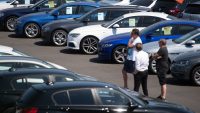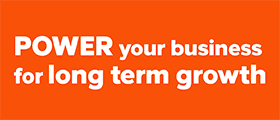If you ask anyone in the motor trade what the past few months have been like, you will often hear the word ‘rollercoaster’.
I can imagine for some that the unpredictability of market conditions and the unprecedented increase in used car values would leave them with that impression, but it wouldn’t be the word I would use.
‘Rollercoaster’ implies some very steep climbs and some very rapid falls, but this hasn’t been the motor trade over the past year. I prefer the term ‘cable car’.
Indulge me for a moment…
We got into the cable car at the bottom of the mountain at the start of 2021, and as the year has progressed we have ascended slowly and serenely up towards the top, enjoying some lovely views along the way.
Yes, there have been those moments when the cable car comes to an abrupt stop and you’re left hanging and swinging precariously, but we soon get moving again.
There are some commentators out there who think the cable car won’t let you disembark at the station at the top of the mountain in 2022 and instead will swing you round and head back towards the bottom at an uncontrollable speed, but I’m not one of those doom-mongers.
My prediction for 2022 is (are you getting tired of the metaphor yet?) that we’ll get off and have some choice about how we get back down to normality.
The big question is how will used car values perform next year?
I believe that we are seeing some return to pre-pandemic seasonal trends in the fourth quarter (cooling demand resulting in falling values, particularly for late-plate cars whose market was arguably the most cooked) and that will continue in the first quarter.

We’re not on a rollercoaster but a cable car, says James Litton
This means a strong appetite for used cars and further increases.
However, as more new cars get delivered throughout 2022, new car offers will start to impact on used car demand and the typical depreciation models will slowly become re-established.
New car order books have never been as big.
Fuelled by a lack of supply and the consumer behaviours around electrification, franchised dealers should see any drop-off in used car profitability compensated for by the recently absent new car margin.
The same could be said of the fleet market.
Taxation benefits designed to encourage the uptake in electric vehicles are starting to drive individuals back to company cars.
These companies also have strong order books, which will result in more historically normal market conditions when these cars are defleeted in 2024 and beyond.
Vehicle parts are starting to become more available, but the longer-term threat to aftersales revenues from electrification still looms and needs to be considered.
The big lesson to be learnt from 2021 for all dealers, franchised or independent, is the absolute importance of used cars in the future profitability of the industry.
This means continuing to look at more diverse stock, widening supply chains and being disciplined around pricing data and disposal.
This column appears in issue 165 of Car Dealer, which is packed with news, views, reviews, interviews and much more. You can read and download the magazine free via this link.

































